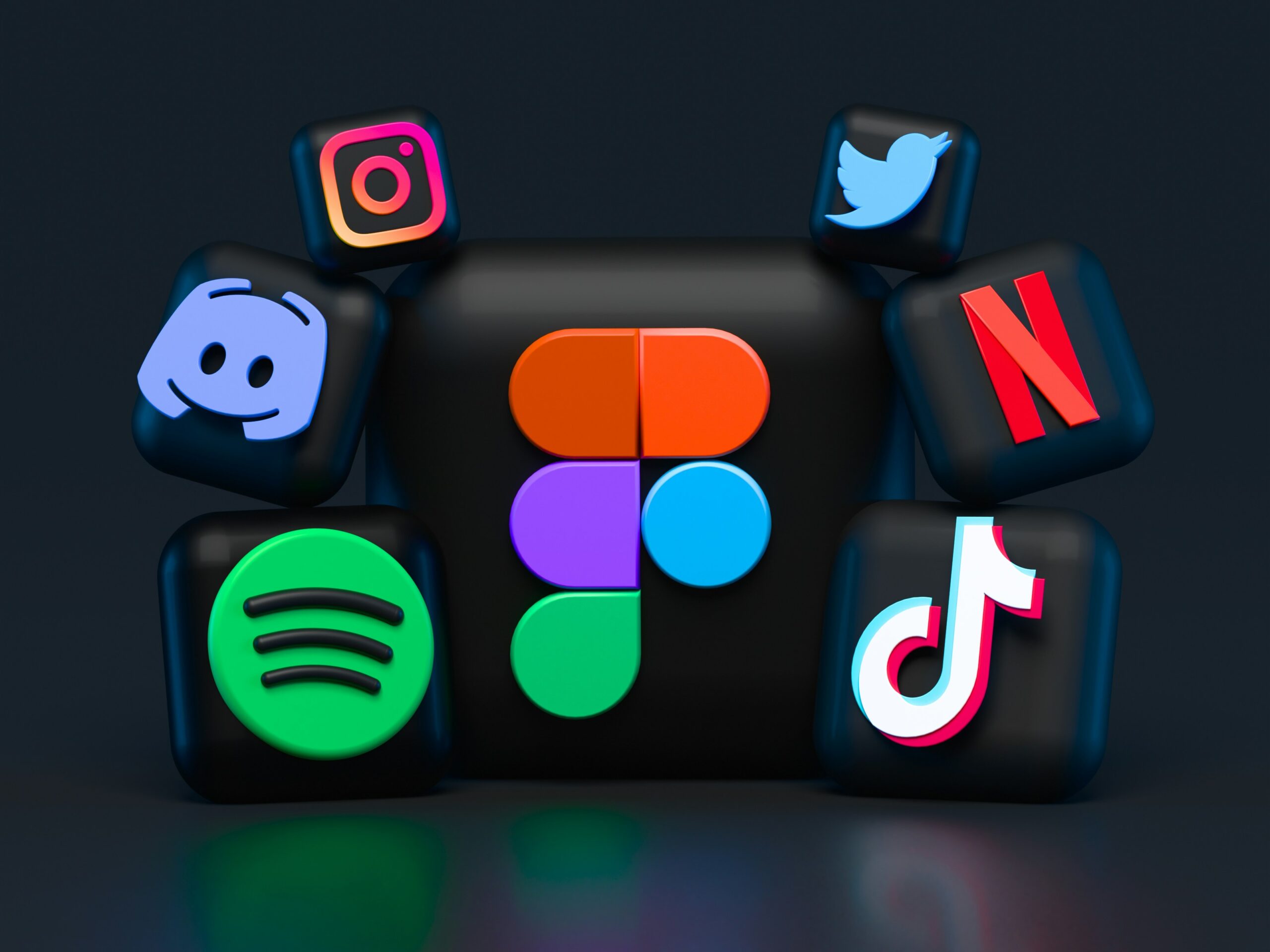Introduction to Social Media Marketing for Small Businesses
In today’s digital age, social media marketing has become an indispensable tool for small businesses. Leveraging social media platforms can significantly amplify a business’s visibility, allowing it to reach a broader audience with minimal investment. By strategically utilizing social media, small businesses can engage directly with their customers, fostering a sense of community and loyalty that is often hard to achieve through traditional marketing methods.
One of the primary benefits of social media marketing is its ability to drive sales. Through targeted advertising and engaging content, small businesses can attract potential customers and convert them into loyal patrons. Social media platforms offer a variety of tools and metrics that enable businesses to track their performance and optimize their strategies in real-time. This level of insight is invaluable for small businesses operating on limited budgets, as it allows them to make data-driven decisions that maximize their return on investment.
This blog post will provide a comprehensive guide to social media marketing for small businesses, examining the unique advantages of different platforms. From Facebook and Instagram to LinkedIn and Twitter, each social media channel offers distinct opportunities for engagement and growth. By understanding these platforms’ specific benefits, small businesses can craft tailored marketing strategies that align with their goals and target audience.
In the following sections, we will delve into the statistics and best practices for each major social media platform. Readers will gain insights into the demographics, user behavior, and advertising features that make each platform unique. Equipped with this knowledge, small businesses can make informed decisions about where to focus their marketing efforts, ensuring they achieve the best possible outcomes.
Whether you are a small business owner looking to enhance your social media presence or a marketer seeking to optimize your strategies, this guide will provide valuable information to help you navigate the ever-evolving landscape of social media marketing.
Facebook: The King of Social Media for Small Businesses
Facebook continues to be a dominant force in the realm of social media, particularly for small businesses. With over 2.8 billion monthly active users as of 2021, the platform offers unparalleled reach and engagement opportunities. User demographics are diverse, spanning various age groups, genders, and geographical locations, making it an optimal choice for businesses looking to target a broad audience.
Engagement rates on Facebook are notable, with users spending an average of 38 minutes per day on the platform. This high level of user activity translates into significant interaction rates for businesses. For instance, Facebook posts from businesses receive on average a 0.18% engagement rate, while video content often sees even higher levels of interaction.
From an advertising standpoint, Facebook offers a compelling return on investment (ROI). According to recent studies, the average cost-per-click (CPC) on Facebook is $0.97, making it a cost-effective platform for small businesses to advertise their products or services. Additionally, the advanced targeting options available—such as demographic, behavioral, and interest-based targeting—enable businesses to reach their ideal customer base more efficiently.
Local retail stores, restaurants, and service-based businesses particularly thrive on Facebook. The platform’s features like Facebook Pages and Groups allow businesses to create a community around their brand. Pages serve as a digital storefront, offering a space to share updates, promotions, and customer reviews, while Groups provide a forum for more personalized and interactive engagement with customers.
Facebook Advertising is another crucial tool for small businesses. With options ranging from boosted posts to sophisticated ad campaigns, businesses can choose the level of investment that suits their budget and marketing goals. The analytics provided by Facebook Ads Manager further enhance the effectiveness of advertising efforts by offering insights into campaign performance and audience behavior.
In summary, Facebook’s extensive user base, robust engagement rates, and versatile advertising options make it an indispensable platform for small businesses. Whether a local retail store, restaurant, or service-based business, Facebook offers the tools and reach necessary for effective social media marketing.
Instagram: A Visual Platform for Creative Industries
Instagram has emerged as a pivotal platform for small businesses, especially those in the creative and visual sectors such as fashion, art, and food. With over 1 billion active users, Instagram offers a vast audience, making it an ideal platform for businesses aiming to showcase their visual content and engage with potential customers. According to recent statistics, over 80% of users follow at least one business account, highlighting the platform’s potential for brand visibility and customer engagement.
Engagement metrics on Instagram are notably high, with an average engagement rate of 1.22% per post for business accounts. This outstrips many other social media platforms, providing small businesses with a significant opportunity to connect with their audience. Instagram Stories, a feature that allows users to post photos and videos that disappear after 24 hours, has also proven to be highly effective. Approximately 500 million accounts use Instagram Stories daily, and one-third of the most viewed Stories come from businesses. This feature allows small businesses to maintain a dynamic and engaging presence without the pressure of permanent content.
Moreover, Instagram’s shopping features have revolutionized the way businesses sell products online. With the introduction of Shopping Tags and the Instagram Shop, businesses can now tag products directly in their posts and stories, making it easier for followers to purchase items. This has led to a more seamless shopping experience and increased sales for many small businesses. In a survey, 70% of shopping enthusiasts turn to Instagram for product discovery, emphasizing the platform’s role in consumer decision-making.
Several small businesses have successfully leveraged Instagram to grow their brand and sales. For instance, the fashion brand Glossier has used Instagram to build a loyal community by sharing user-generated content and behind-the-scenes looks at their products. Similarly, local food businesses have utilized Instagram’s visual appeal to showcase their dishes and attract food enthusiasts. These case studies underscore the platform’s versatility and effectiveness for small businesses, particularly those that thrive on visual storytelling.
Twitter: Real-Time Engagement and Customer Service
Twitter stands out as a dynamic platform for real-time communication, making it indispensable for small businesses aiming to enhance customer service and engagement. With over 330 million monthly active users, Twitter’s audience is diverse, featuring a significant segment of young adults and professionals. For small businesses, this demographic diversity offers a fertile ground for brand visibility and customer interaction.
One of Twitter’s primary advantages is its capability for real-time engagement. The platform is designed for quick updates and immediate responses, which is crucial for customer service. According to recent statistics, tweets addressed to customer service accounts result in a 19% increase in customer satisfaction. This responsiveness not only builds trust but also fosters loyalty among customers.
Engagement on Twitter can be measured through various metrics, including likes, retweets, and replies. Tweets with images receive 150% more retweets than those without, while those with hashtags see a 100% increase in engagement. For small businesses, these statistics highlight the importance of visual content and strategic hashtag usage to amplify reach and interaction.
Twitter also serves as an effective platform for brand updates and industry news. Regularly posting updates about new products, services, or company milestones keeps followers informed and engaged. Additionally, by sharing industry news and insights, small businesses can position themselves as thought leaders, further establishing credibility and authority in their respective fields.
Several small businesses have leveraged Twitter’s potential with notable success. For instance, Taco Bell has used Twitter to engage with customers humorously and promptly, significantly enhancing their brand’s relatability and customer loyalty. Another example is T-Mobile, which has effectively utilized Twitter for real-time customer service, resolving issues quickly and publicly, thus showcasing their commitment to customer satisfaction.
In conclusion, Twitter’s real-time engagement capabilities and its role in customer service make it an invaluable tool for small businesses. By understanding and utilizing the platform’s features, small businesses can significantly enhance their customer interactions, brand presence, and industry authority.
LinkedIn: Professional Networking for B2B Small Businesses
LinkedIn has solidified its position as the premier professional networking platform, particularly advantageous for B2B small businesses. With over 774 million members globally, LinkedIn’s user base predominantly comprises professionals and decision-makers. This demographic makes it a fertile ground for industries such as consulting, IT services, and corporate training to engage in lead generation and professional networking.
The effectiveness of LinkedIn for B2B small businesses is underscored by its impressive engagement statistics. Studies have shown that LinkedIn is responsible for 80% of B2B leads generated via social media, significantly outperforming other platforms. Furthermore, LinkedIn users are highly engaged, with 40% accessing the site daily. This high engagement rate enhances the visibility of content, making it easier for small businesses to reach their target audience.
LinkedIn Ads and Sponsored Content have proven to be effective tools for small businesses aiming to expand their reach. LinkedIn’s advertising platform allows for precise targeting based on industry, job title, and company size, ensuring that advertisements reach the most relevant audience. Sponsored Content, in particular, has been shown to drive a 2x higher engagement rate compared to other forms of digital advertising. This makes LinkedIn an invaluable tool for small businesses looking to maximize their marketing ROI.
For small businesses in consulting, IT services, and corporate training, LinkedIn offers a unique opportunity to build professional relationships and generate high-quality leads. By participating in LinkedIn Groups, sharing industry-specific content, and leveraging the platform’s advanced search features, these businesses can effectively position themselves as thought leaders in their respective fields. Additionally, LinkedIn’s robust analytics tools provide insights into profile views, post engagements, and follower demographics, enabling small businesses to fine-tune their strategies for optimal results.
In conclusion, LinkedIn’s professional networking capabilities make it an indispensable platform for B2B small businesses. Its user demographics, high engagement rates, and effective advertising options offer unparalleled opportunities for lead generation and professional growth.
Pinterest: A Discovery Platform for Niche Markets
Pinterest stands out as a unique platform, primarily serving as a discovery and inspiration hub. With over 450 million monthly active users as of 2023, Pinterest offers an expansive audience for small businesses aiming to tap into niche markets. The platform’s user base is predominantly female, with 76% of its users being women, making it particularly beneficial for businesses targeting this demographic.
One of the key advantages of Pinterest is its high engagement rate. Pinners, or Pinterest users, are known for their active participation, with 85% of users citing that they go to Pinterest to start new projects. This engagement is further evidenced by the fact that 89% of users use Pinterest for purchase inspiration, and 47% of users log in specifically to shop. These metrics underscore Pinterest’s potential to drive traffic and sales for small businesses.
Pinterest Pins and Boards are instrumental tools for businesses. Pins, which are bookmarks that people use to save ideas they love on Pinterest, can link directly to a business’s website, thereby driving significant traffic. Boards, which are collections of Pins, help in organizing content around specific themes or interests. For small businesses in sectors like home decor, DIY crafts, and lifestyle products, creating visually appealing and well-organized Boards can attract and retain a dedicated audience.
Several small businesses have successfully leveraged Pinterest to boost their visibility and sales. For instance, a small home decor business can create Boards showcasing different room setups, using Pins to link each item directly to their online store. Similarly, a DIY craft business can share step-by-step project guides that link to their product pages. These strategies not only enhance user engagement but also convert Pinners into customers.
In conclusion, Pinterest’s discovery-driven approach and its highly engaged user base make it an invaluable platform for small businesses operating in niche markets. By effectively utilizing Pins and Boards, businesses can significantly enhance their online presence, drive traffic, and increase sales.
TikTok: Capturing the Gen Z and Millennial Audience
TikTok has rapidly emerged as a dominant force in the social media landscape, particularly among Gen Z and Millennial users. With over 1 billion active users as of 2023, the platform’s exponential growth highlights its significant influence. Approximately 60% of these users are Gen Z, those born between 1997 and 2012, and an additional 30% belong to the Millennial cohort. These statistics underscore TikTok’s stronghold on younger demographics, making it a vital platform for small businesses aiming to engage with these age groups.
Engagement on TikTok is unparalleled. Users spend an average of 52 minutes per day on the app, with engagement rates far surpassing those of other social media platforms. For small businesses, this means a higher probability of content visibility and interaction. TikTok’s algorithm, which promotes content based on user interest rather than follower count, levels the playing field, allowing small enterprises to gain traction without significant follower bases.
The effectiveness of TikTok Ads cannot be overlooked. The platform offers a variety of ad formats, including In-Feed Ads, Branded Hashtag Challenges, and Branded Effects, all designed to maximize user interaction. Notably, Branded Hashtag Challenges have demonstrated high engagement, with participation rates often exceeding 8%. This format encourages users to create and share content, effectively amplifying brand reach through user-generated content.
Influencer partnerships on TikTok also present golden opportunities for small businesses. Collaborating with influencers who resonate with Gen Z and Millennials can drive substantial visibility and credibility. For instance, beauty brand Glossier has successfully leveraged TikTok influencers to promote its products, resulting in significant upticks in brand awareness and sales.
Industries such as entertainment, beauty, and fashion stand to benefit immensely from a strategic TikTok presence. Small businesses in these sectors can harness the platform’s creative tools to produce compelling content that resonates with younger audiences. An example is the fashion brand Aerie, which has utilized TikTok to launch inclusive and body-positive campaigns, attracting a dedicated following and increased sales.
In summary, TikTok offers small businesses a unique avenue to capture the attention of Gen Z and Millennial consumers. By leveraging the platform’s robust engagement metrics, effective ad formats, and influencer partnerships, small enterprises can build strong, authentic connections with younger audiences, driving brand growth and success.
Conclusion: Choosing the Right Social Media Platform for Your Small Business
In the rapidly evolving landscape of social media, selecting the right platform for your small business is crucial. The key is to align your choice with your target audience, industry, and marketing goals. Each platform offers unique advantages and caters to diverse demographics, making it essential to do thorough research and strategic planning.
First and foremost, identify where your target audience spends most of their time. Platforms like Facebook and Instagram are popular among a broad age range, while TikTok and Snapchat appeal to younger users. LinkedIn, on the other hand, is indispensable for B2B companies targeting professionals and industry leaders. Knowing your audience’s preferences can significantly enhance your engagement and reach.
Secondly, consider the nature of your industry. Visual-centric businesses such as fashion, food, and travel can leverage platforms like Instagram and Pinterest to showcase their products and services effectively. For more text-oriented industries, Twitter and LinkedIn can be excellent choices to share insights, news, and professional content.
Moreover, define your marketing goals clearly. If brand awareness is your primary objective, platforms with high user engagement like Facebook and Instagram might be the best fit. For lead generation and professional networking, LinkedIn provides unparalleled opportunities. Understanding your goals will help you allocate resources efficiently and achieve better results.
Practical tips for evaluating platforms include analyzing competitors’ strategies, reviewing platform-specific analytics, and considering the content type you can consistently produce. Experimentation is also key – don’t hesitate to test different platforms and track their performance. Use analytics tools to measure metrics such as engagement, reach, and conversion rates to refine your strategy continuously.
Ultimately, the right social media platform for your small business is one that aligns with your audience, industry, and goals. By taking a strategic approach and being open to experimentation, you can optimize your social media marketing efforts for maximum impact.



